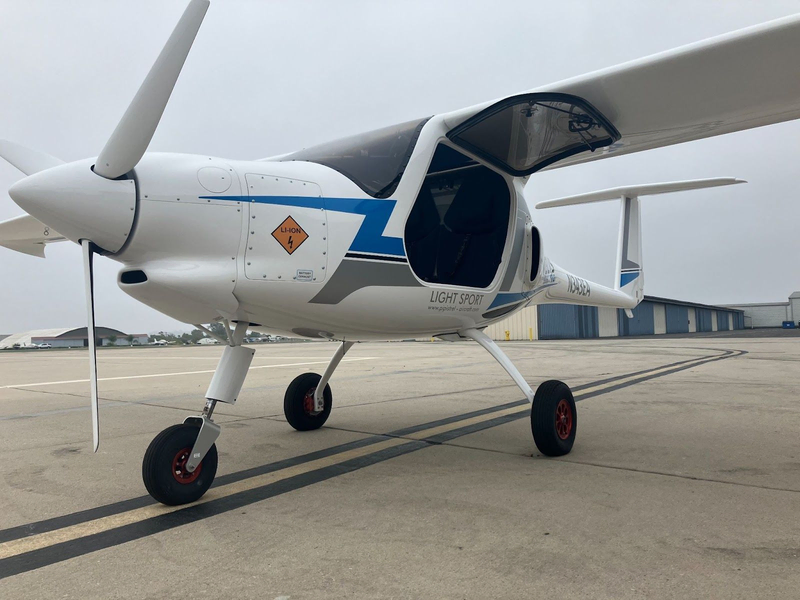
The California Energy Commission awarded ZeroAvia a multi-million-dollar grant to develop a pioneering hydrogen refueler for aviation.
California is at the center of a pioneering aviation project dedicated to groundbreaking hydrogen refueling infrastructure. ZeroAvia was awarded a grant to develop a first-of-its-kind refueling vehicle to advance hydrogen-powered commercial aviation.
ZeroAvia didn’t design an entirely new type of aircraft. Instead, it focused on hydrogen-electric propulsion systems that could transform existing aircraft into greener ones through retrofitting. The ZA600 is the company’s solution for a 300-mile (482 km) range in aircraft with 9 to 19 seats. This initial commercial solution is set to be certified as soon as next year and followed by a more powerful version (for a 700-mile/1,126 km range in 40-80 seat aircraft) in just two years.
Retrofitting existing aircraft with hydrogen-electric systems is a fast and efficient solution only as long as the right infrastructure is also in place. The ZA600 engine uses gaseous hydrogen storage, but the following ZA2000 models for big commercial airliners will require the use of cryogenic liquid hydrogen as the only way to limit the size and weight of fuel storage systems.
For instance, a retrofitted 76-seat Dash-8-400, which is the type of aircraft that ZeroAvia is currently using for testing the ZA2000 engine, needs to store up to 1 ton of liquid hydrogen on board to ensure a 700-nautical mile range.
This is why ZeroAvia will work at the same time on developing a dedicated refueling truck from scratch. The aviation company secured a grant of $3.25 million from the California Energy Commission (CEC) for this project. It claims this will be the first-of-a-kind mobile liquid hydrogen refueler.
The future truck will have a 10,000-liter (3,640-gallon) capacity and the ability to match the flow rates of standard jet fuel refills. In other words, the process will be fast enough to ensure efficient turnaround times. The vehicle will primarily be dedicated to refueling hydrogen-powered aircraft but could also expand to other aviation-related applications and even to maritime operations.
ZeroAvia, which was founded in California and then expanded to the UK, is ready to start developing this unique mobile refueler this month. The project will primarily unfold at the Livermore Municipal Airport, where we can also expect to see the first LH2 fueling demonstrations soon.
While ZeroAvia is working on its groundbreaking ZA2000 engine and the related infrastructure, the ZA600 is gearing up for commercial success in the market. The hydrogen technology expert has already secured more than 2,000 pre-orders for the ZA600. The most recent ones were added earlier this month when the Indian aviation operator Mehair agreed to purchase up to 20 units in order to retrofit its Cessna Caravan fleet.
More and more aviation operators are considering the option of retrofitting existing fleets to drastically lower emission levels until they are eventually replaced by new-generation zero-emission aircraft. Additional funding through local and government agencies can only speed up the process.
California is at the center of a pioneering aviation project dedicated to groundbreaking hydrogen refueling infrastructure. ZeroAvia was awarded a grant to develop a first-of-its-kind refueling vehicle to advance hydrogen-powered commercial aviation.
ZeroAvia didn’t design an entirely new type of aircraft. Instead, it focused on hydrogen-electric propulsion systems that could transform existing aircraft into greener ones through retrofitting. The ZA600 is the company’s solution for a 300-mile (482 km) range in aircraft with 9 to 19 seats. This initial commercial solution is set to be certified as soon as next year and followed by a more powerful version (for a 700-mile/1,126 km range in 40-80 seat aircraft) in just two years.
Retrofitting existing aircraft with hydrogen-electric systems is a fast and efficient solution only as long as the right infrastructure is also in place. The ZA600 engine uses gaseous hydrogen storage, but the following ZA2000 models for big commercial airliners will require the use of cryogenic liquid hydrogen as the only way to limit the size and weight of fuel storage systems.
For instance, a retrofitted 76-seat Dash-8-400, which is the type of aircraft that ZeroAvia is currently using for testing the ZA2000 engine, needs to store up to 1 ton of liquid hydrogen on board to ensure a 700-nautical mile range.
This is why ZeroAvia will work at the same time on developing a dedicated refueling truck from scratch. The aviation company secured a grant of $3.25 million from the California Energy Commission (CEC) for this project. It claims this will be the first-of-a-kind mobile liquid hydrogen refueler.
The future truck will have a 10,000-liter (3,640-gallon) capacity and the ability to match the flow rates of standard jet fuel refills. In other words, the process will be fast enough to ensure efficient turnaround times. The vehicle will primarily be dedicated to refueling hydrogen-powered aircraft but could also expand to other aviation-related applications and even to maritime operations.
ZeroAvia, which was founded in California and then expanded to the UK, is ready to start developing this unique mobile refueler this month. The project will primarily unfold at the Livermore Municipal Airport, where we can also expect to see the first LH2 fueling demonstrations soon.
While ZeroAvia is working on its groundbreaking ZA2000 engine and the related infrastructure, the ZA600 is gearing up for commercial success in the market. The hydrogen technology expert has already secured more than 2,000 pre-orders for the ZA600. The most recent ones were added earlier this month when the Indian aviation operator Mehair agreed to purchase up to 20 units in order to retrofit its Cessna Caravan fleet.
More and more aviation operators are considering the option of retrofitting existing fleets to drastically lower emission levels until they are eventually replaced by new-generation zero-emission aircraft. Additional funding through local and government agencies can only speed up the process.












